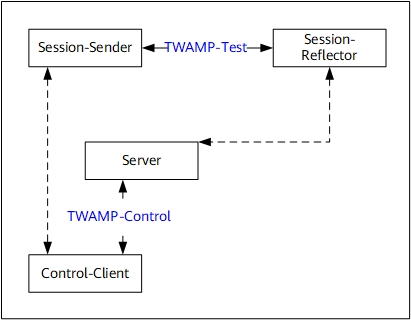Overview of TWAMP
The Two-Way Active Measurement Protocol (TWAMP) is a technology that measures the round-trip performance of an IP network.TWAMP uses UDP packets to collect statistics about the delay, jitter, and packet loss rate. In addition, TWAMP intelligently separates session control and traffic measurement to provide high security.
Background
As networks rapidly develop and applications widely apply, various services are deployed to meet requirements in different scenarios. Therefore, networks encounter increasingly higher requirements for statistics collection. A tool that rapidly provides statistics about IP network performance is in urgent need.
Traditionally, network elements (NEs) themselves generate and maintain statistics about the IP network performance. To display statistics about the performance of an entire network, a network management system (NMS) is required to manage multiple NEs and collect statistics about these NEs. However, there may be no NMS deployed or the NMS may be incapable of collecting statistics.
TWAMP is therefore introduced. NEs themselves no longer need to generate or maintain statistics about the IP network performance. The performance management system manages only the TWAMP client and easily obtains statistics about the entire network.
Advantages
- TWAMP is a standard protocol that has a unified measurement model and packet format, facilitating deployment.
- Multiprotocol Label Switching Transport Profile (MPLS-TP) Operation, Administration and Maintenance (OAM) can be deployed only on MPLS-TP networks, whereas TWAMP can be deployed on IP networks, MPLS networks, and Layer 3 virtual private networks (L3VPNs).
- Compared with IP Flow Performance Measurement (FPM), TWAMP boasts stronger availability and easier deployment and requires no clock synchronization.
Models
- Control-client: establishes, starts, and stops a test session and collects statistics.
- Session-sender: proactively sends probes for performance statistics after being notified by the control-client.
- Server: responds to the control-client's request for establishing, starting, or stopping a test session.
- Session-reflector: replies to the probes sent by the session-sender with response probes after being notified by the server.
